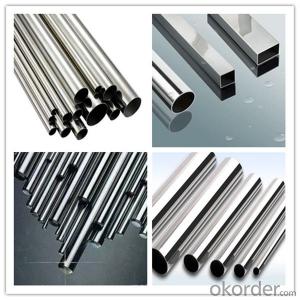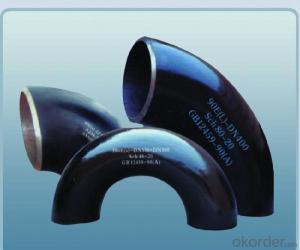Stainless Steel Chimney
Stainless Steel Chimney Related Searches
Best Paint For Stainless Steel Blanket Insulation For Steel Buildings Primer For Galvanized Steel Foam Filter For Stainless Steel H S Code For Stainless Steel Surface Grinding Wheels For Stainless Steel Surface Grinding Wheels For Hardened Steel Hole Saw For Stainless Steel Paint For Stainless Steel Stainless Steel For BbqHot Searches
Steel Mesh Panels For Sale Price For Stainless Steel Scrap Scrap Price For Stainless Steel Price For Stainless Steel Stainless Steel Tank For Sale Stainless Steel Sheets For Sale Cheap High Tea Sets For Sale Stainless Steel Tanks For Sale Stainless Steel For Sale High Density Fiberboard For Sale Solar Hot Water Collectors For Sale Scaffolding For Sale In Uae Scaffolding For Sale In Ireland Scaffolding For Sale In Houston Type Of Inverter For Solar Price Of Shipping Containers For Sale Types Of Inverter For Solar Stock Price For Aluminum Used Solar Inverter For Sale Steel Mesh Panels For SaleStainless Steel Chimney Supplier & Manufacturer from China
Okorder.com is a professional Stainless Steel Chimney supplier & manufacturer, offers integrated one-stop services including real-time quoting and online cargo tracking. We are funded by CNBM Group, a Fortune 500 enterprise and the largest Stainless Steel Chimney firm in China.Hot Products
FAQ
- Stainless steel pipes have the capability to undergo powder coating. Powder coating, a technique employed to furnish metal surfaces with both a safeguarding and embellishing finish, is involved. To achieve this, a dry powder coating is applied onto the stainless steel pipes' surface, and subsequently, it is solidified through heat. This process yields a robust and sleek coating. Powder coating is frequently employed to augment the visual appeal of stainless steel pipes, bestow supplementary resistance against corrosion, and safeguard against deterioration caused by weather and usage. Nonetheless, it is crucial to acknowledge that stainless steel pipes necessitate appropriate preparation prior to powder coating to ensure adhesion and achieve optimal outcomes.
- Yes, stainless steel pipes can be used for compressed air systems. Stainless steel is highly resistant to corrosion and can withstand high pressure, making it a suitable material for handling compressed air.
- What's the difference between stainless steel 304 and stainless steel 202?
- 304 stainless steel is a common stainless steel material, the density of 7.93 g/cm3, the industry is also called 18/8 stainless steel. High temperature resistance of 800 degrees, with good processability, high toughness characteristics, widely used in industry and furniture decoration industry and food and medical industry. The common marking methods in the field are 0Cr18Ni9, SUS304.
- One way to insulate stainless steel pipes is by using insulation materials such as foam pipe covers or fiberglass pipe insulation. These materials can be wrapped around the pipes to provide a layer of insulation and prevent heat loss or condensation. Additionally, using insulation tape or adhesive can help secure the insulation in place.
- The working temperature range for stainless steel pipes depends on the specific grade of stainless steel being used. Generally, stainless steel pipes can withstand a wide range of temperatures, from extremely low temperatures to high temperatures. For austenitic stainless steel grades, which are the most commonly used in pipe applications, the working temperature range is typically from -196°C (-320°F) to 816°C (1500°F). These grades, such as 304 and 316, exhibit excellent heat resistance and can maintain their strength and corrosion resistance even at elevated temperatures. However, it is important to note that the working temperature range can vary depending on the specific alloy composition and the application requirements. Some specialized stainless steel grades, such as duplex or super duplex stainless steels, may have different temperature limits due to their unique characteristics. It is always recommended to consult the manufacturer's specifications and guidelines to determine the specific working temperature range for a particular grade of stainless steel pipe. Additionally, considering factors such as pressure, corrosive environment, and thermal cycling should also be taken into account when determining the appropriate working temperature range for stainless steel pipes.
- Indeed, polypropylene serves as an appropriate material for insulating stainless steel pipes. This is due to its remarkable thermal properties and minimal thermal conductivity. Polypropylene exhibits resistance against moisture, chemicals, and UV radiation, rendering it suitable for diverse applications. By implementing polypropylene insulation, the loss or gain of heat in stainless steel pipes can be averted, thereby enhancing energy efficiency and decreasing the likelihood of condensation or freezing. Consequently, it is imperative to guarantee the correct installation and compatibility of the polypropylene insulation with the particular stainless steel pipe in order to attain optimal performance and durability.
- Yes, stainless steel pipes can be used for fire protection systems. Stainless steel has excellent heat resistance properties, making it suitable for high-temperature applications such as fire protection systems. It is resistant to corrosion, ensuring durability and long-term performance in such critical systems. Additionally, stainless steel pipes have the advantage of being low maintenance and have a long service life, making them a reliable choice for fire protection installations.
- Yes, stainless steel pipes are highly suitable for power generation plants. They possess excellent corrosion resistance, high strength, and durability, making them ideal for handling high-pressure and high-temperature fluids and gases found in power generation processes. Stainless steel pipes also offer exceptional resistance to various chemicals, ensuring the integrity and longevity of the piping system in power plants. Additionally, their smooth inner surface minimizes frictional losses, enhancing the efficiency of fluid transportation within the plant.















































